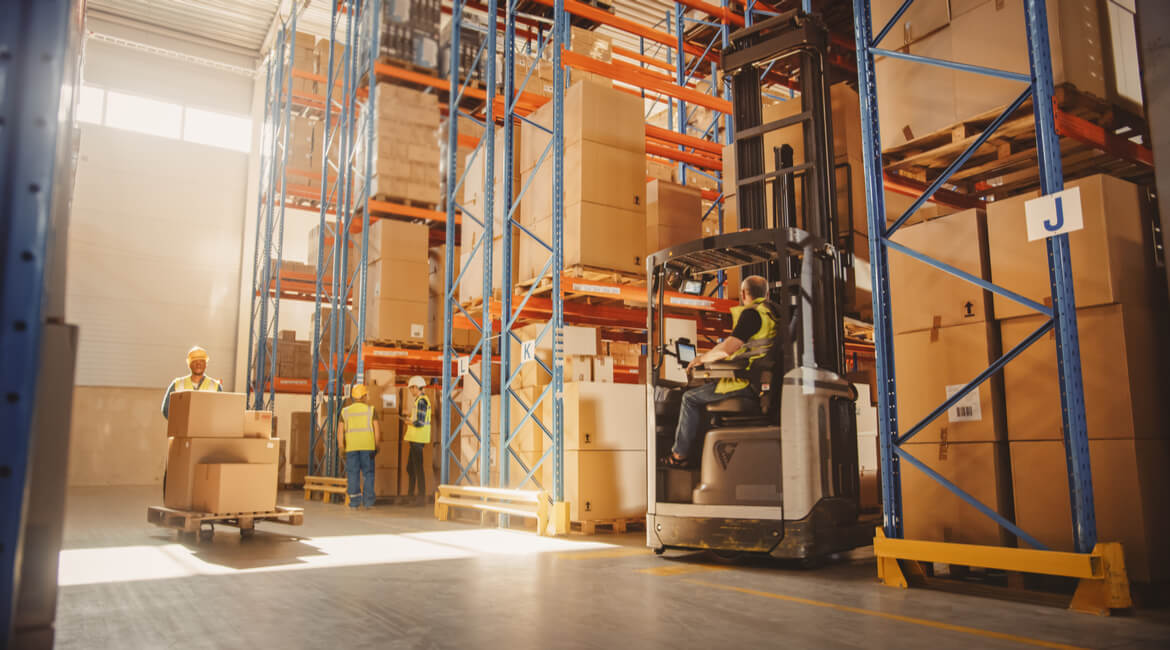Warehouse management: reduce time and costs with IoT and RTLS

Making warehouse management more efficient, profitable, and secure is one of the logistics 4.0 main goals. In other words, a mix of “storage, handling and transport systems, which develop around three points”: physical automation, connection, decision-making process” [Source: Osservatori.net]
As happened with Industry 4.0, digital management systems, properly integrated with new generation machinery, ensure far more streamlined and productive logistics. This happens, among other things, because they allow the most labor-intensive tasks to be entrusted to machines and base decision-making processes on solid analytical foundations.
This is what happens in the warehouse by combining hardware and software, specifically Internet of Things technologies and RTLS locating systems. In this way, the result is a significant increase in material handling’s efficiency and a remarkable reduction of operating times and costs.
Another important consequence comes from the combination of both IoT and RTLS: warehouse activities become safer. In fact, lifts, carts, and other handling tools are better controlled, lightening the workload and significantly reducing risks for operators.
Warehouse management: Internet of Things solutions
Cargo handling becomes more flexible and secure thanks to the IoT (Internet of Things). By integrating hardware and software solutions it’s possible to organize the warehouse safely and with premium efficiency, while sensors and telemetry systems ensure perfect tracking of the carts’ missions.
Thanks to this system, it is then possible to optimize the entire process of a mission. The sensors, in fact, facilitate the localization and the collection of the goods, and allow to track handling operations also on the equipment that is employed. Even the equipment tracking – made possible by the adoption of these sensors – improves the missions management, ensuring constant monitoring of the routes and prompt detection of any critical issues.
The result is a very efficient warehouse management model, both in the operational phase and at the planning stage. In fact, the data collected thanks to the use of IoT are processed to dynamically adjust operations to the context. All in real time, allowing to obtain a perfect matching between mission and resource according to the current situation in the warehouse, the availability of operators and equipment or potential problems encountered.
RTLS systems for real time localization
Digital technology also significantly improves the safety of work in the warehouse: solutions such as RTLS (Real-Time Locating System) in fact, with real-time monitoring of handling equipment, also allow to reduce the risks of collisions and accidents.
Special anti-collision systems exploiting different signal transmission technologies that are particularly accurate, can thus locate handling equipment with precision, in real time. This allows them – among other things – to activate when an alert threshold is exceeded. Still, RTLS tracking devices can be worn by operators (as “tags”, also combinable with badges) and thus further improve the safety in handling operations.
RTLS systems, after all, not only improve safety in the warehouse, but also the concrete uptime, as mentioned earlier. An ideal combination of efficiency and safety is achieved in the entire process of cargo management, from picking to handling to possible repositioning.
Logistics 4.0 for warehouse management
Internet of Things solutions, as well as Real-Time Locating Systems, are just a few examples of how digital technologies can make warehouse operations more efficient.
The capillary control of equipment, assets and operators – as well as the association of all processes in an integrated ecosystem – lead to a drastic reduction in time and costs. Redundancies and error margins are eliminated, mission execution is efficient, valuable resources are saved in logistics processes.
In all cases, logistics 4.0 solutions, managed in an IoT perspective and with the use of RTLS systems, improve material handling management and, in general, all warehouse operations.
